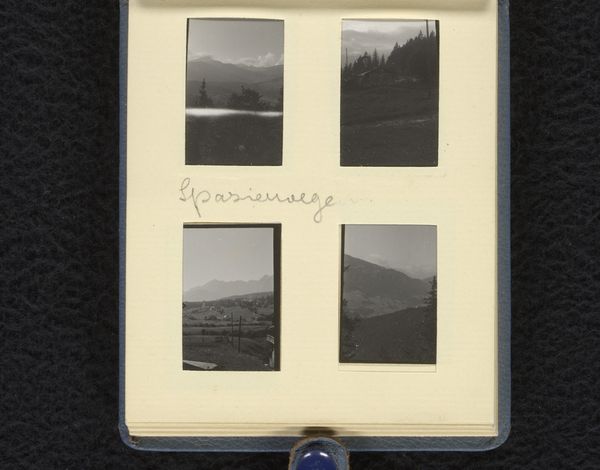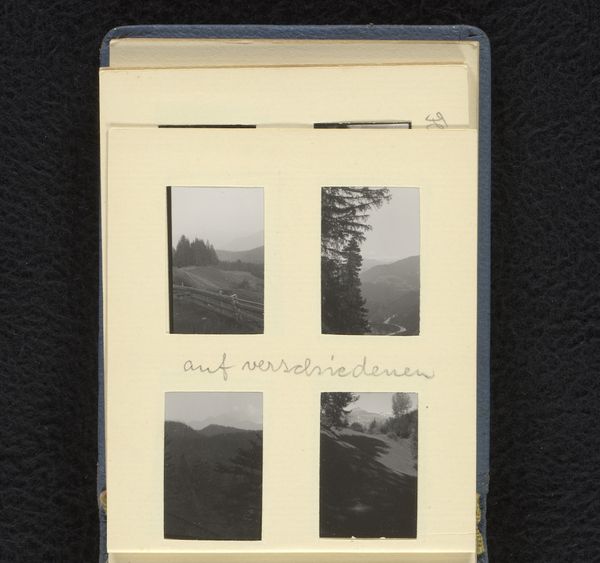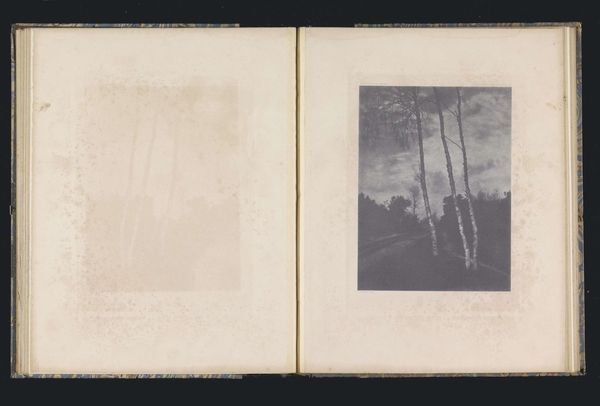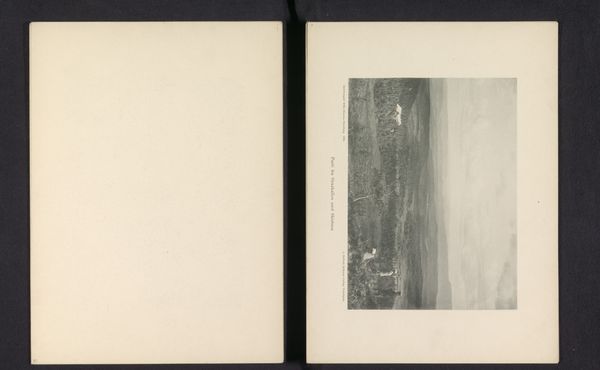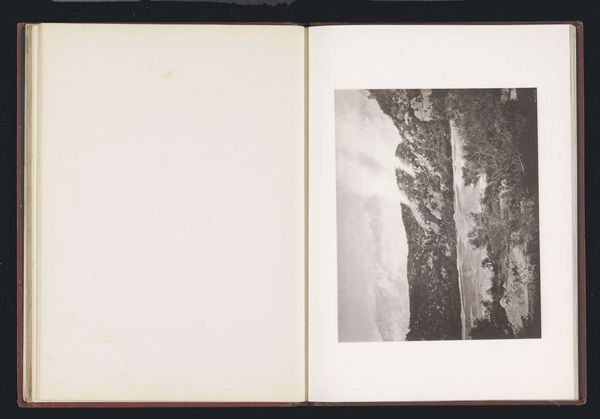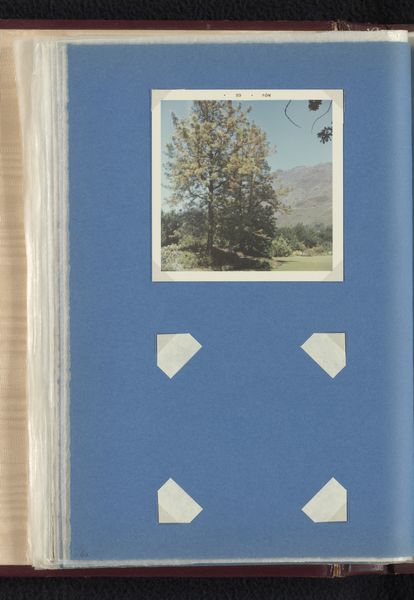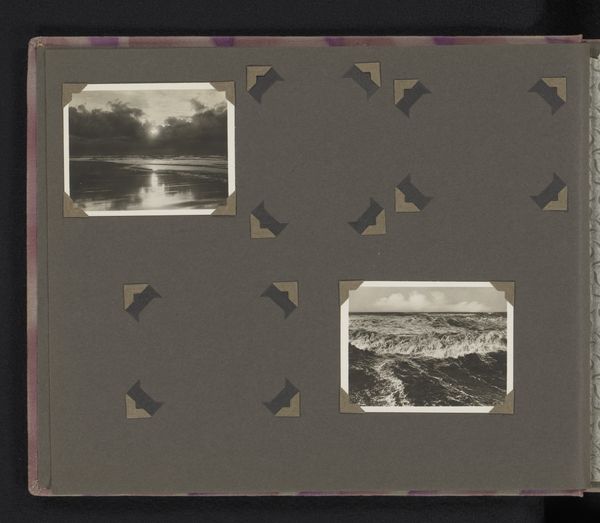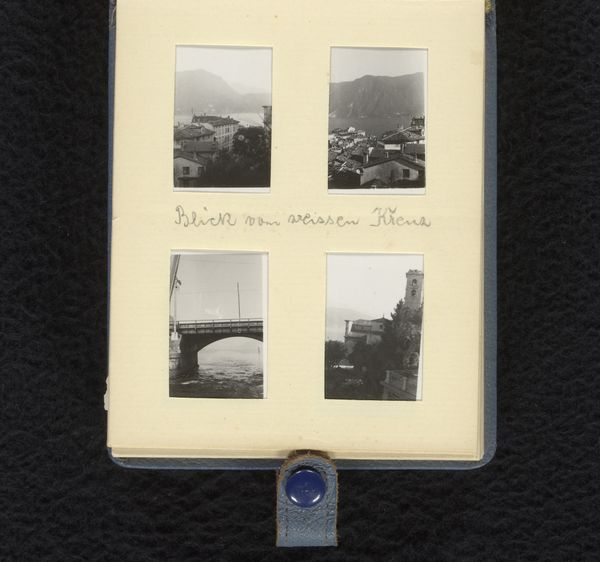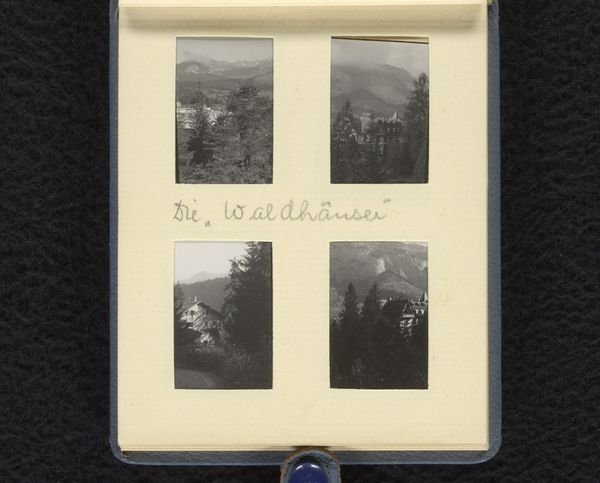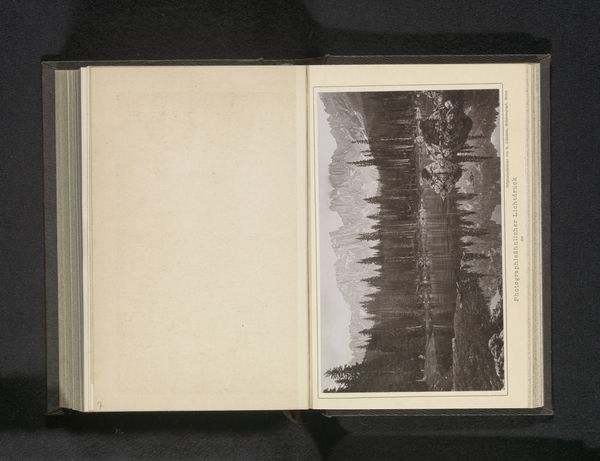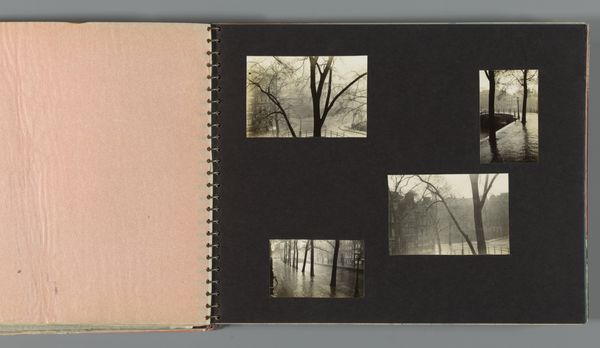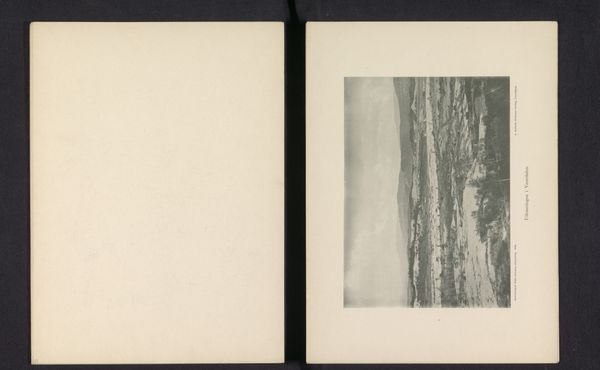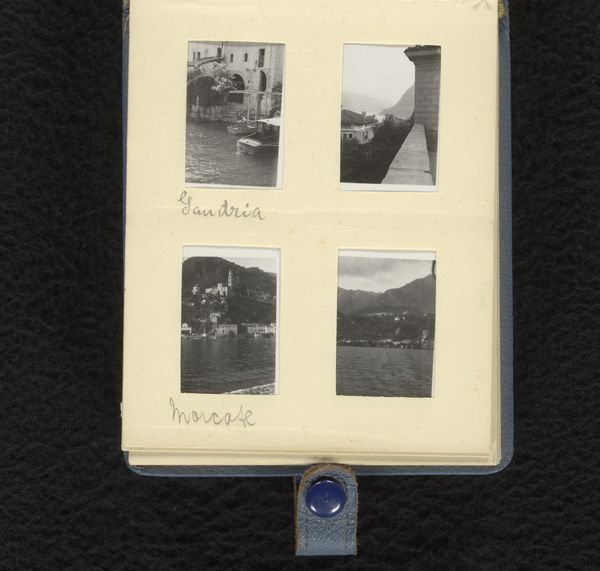
Caumameer, tijdens een vakantie van de familie Wachenheimer, augustus 1936, Zwitserland 1936 - 1938
0:00
0:00
photography
#
still-life-photography
#
lake
#
landscape
#
photography
Dimensions: height 33 mm, width 44 mm, height 85 mm, width 105 mm
Copyright: Rijks Museum: Open Domain
Curator: Here we have a photographic still life, dating from 1936 to 1938. It depicts “Caumameer, tijdens een vakantie van de familie Wachenheimer, augustus 1936, Zwitserland.” Editor: It's quite melancholic, isn't it? Even in these small glimpses, there’s a somber mood created by the monochrome tones. The lake is dark, framed by dense forests. It makes you wonder what was happening in the world then and if these folks knew about the storm clouds gathering over Europe at the time this photo was taken. Curator: That's a fascinating point. Contextually, yes, this photograph exists within the shadow of rising fascism. These family snapshots become charged. Looking at the formal composition, you notice how the four vignettes are contained, almost classified, like specimens. Perhaps, in a way, the family was trying to contain this moment, preserve the stillness and peace amidst impending chaos. Editor: The family album becomes a curated archive, intentionally crafting and re-membering family history in a way that reflects their identity. I wonder what stories these pictures suppress even as they appear to innocently show beautiful vacation landscapes in Switzerland. Were these people running from something? Looking at them again, each photograph has water with forest surrounding it - and yet the views all seem to suggest closed or claustrophobic scenes - a visual metaphor perhaps? Curator: Or even an attempt to construct a narrative of stability in very unstable times. These landscape photos suggest escape, which was very loaded for families living at the time. Consider how these are framed within the family’s travels, asserting not only their identity, but also privilege, a very specific politics of seeing and being seen. Editor: The name “Caumasee” almost centers itself to be looked upon within the family's history book, adding another dimension and point of reference. These ordinary landscape snapshots actually create more questions. How do we understand representation and image-making, and their connection to place, memory, identity, and experience? Curator: Ultimately, I’m struck by how this image compels us to remember that even mundane images contain narratives shaped by forces far larger than a single family’s vacation. Editor: Indeed, it becomes a testament to how personal narratives are always interwoven with historical realities and political undertones, offering insights into memory, representation and lived experiences during challenging times.
Comments
No comments
Be the first to comment and join the conversation on the ultimate creative platform.
